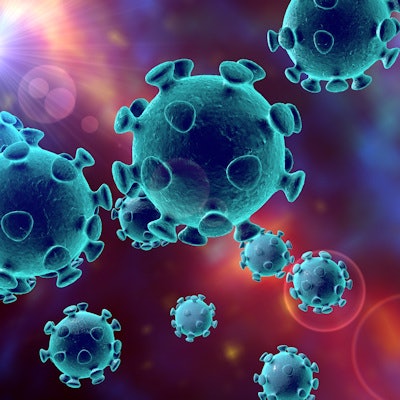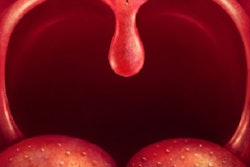
Dry mouth, loss of taste, olfactory dysfunction, or a combination of these symptoms may be the sole or initial signs of COVID-19, according to a new study published on September 15 in the American Journal of Otolaryngology.
Though some research has linked tongue ulcers, a mouth rash, and a loss of taste and smell to SARS-CoV-2, this appears to be the first time researchers may have found a clear connection between dry mouth alone and the infection. Dental teams may want to consider asking patients about these potential symptoms to curb the spread.
"Awareness is fundamental to identify COVID-19 patients at an early stage of the disease and limit the spread of the virus," wrote the authors, led by Dr. Paolo Fantozzi of the department of oral and maxillofacial sciences at Sapienza University of Rome.
No two identical
COVID-19 can cause mild flu-like symptoms, organ failure, or death. Older individuals and those with underlying conditions, including obesity, heart problems, and diabetes, face the biggest threat. However, scientists are still trying to piece together why some people are asymptomatic, whether other conditions are initial signs of infection, and what leaves some patients requiring lengthy hospitalizations.
Research has shown that SARS-CoV-2 patients have reported loss of taste and smell. Oral complications secondary to the infection have been poorly described, which is the case in the one study that has shown some patients reported dry mouth and taste difficulties. This has left vital gaps in the recognition of the onset and characterization of such symptoms, as well as their associations with COVID-19 outcomes.
In June, a telephone-based, modified survey obtained from the National Health and Nutrition Examination Survey (NHANES) 2013-2014 for taste and smell disorders and the Fox Questionnaire for dry mouth were administered to 111 patients to assess the prevalence and characterize the symptoms of xerostomia, anosmia, and dysgeusia. These patients had visited emergency departments and tested positive for SARS-CoV-2 between March 6 and April 30, according to the authors.
Early indicator
Though the most common symptom patients experienced prior to being diagnosed with COVID-19 was taste dysfunction, which 78% reported experiencing, dry mouth was the second-most reported. About 75% experienced dry mouth, and approximately 71% experienced olfactory dysfunction prior to their diagnoses.
About 77% of patients who had dry mouth reported that it was the first time they had experienced xerostomia. Additionally, about 40% of those with dry mouth also reported swallowing difficulties. Approximately 88% who experienced dysgeusia reported it was the first time they ever had taste difficulties. Of those patients with olfactory dysfunction, 87% said it was the first time they had experienced it, according to the authors.
Though the study offers some new insight into COVID-19, it had some limitations, including the sample size. Because it was relatively small, the results may not be generalizable to all COVID-19 patients.
Thoroughly screen
Because xerostomia and olfactory and gustatory dysfunctions are common symptoms reported as naturally accompanying COVID-19, and, in some cases, as the sole manifestation of disease, clinicians need to discuss them with patients, the authors concluded.
"Oral health and medical providers should consider the evaluation of such symptoms during the initial [work-up] and screening which may help [identify] COVID-19 patients at an early stage," they wrote.




















